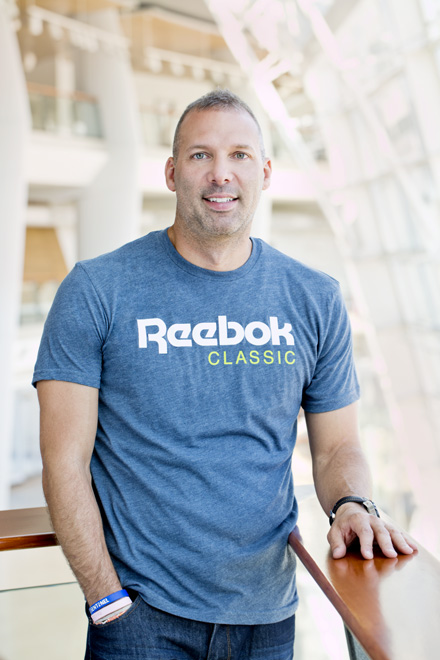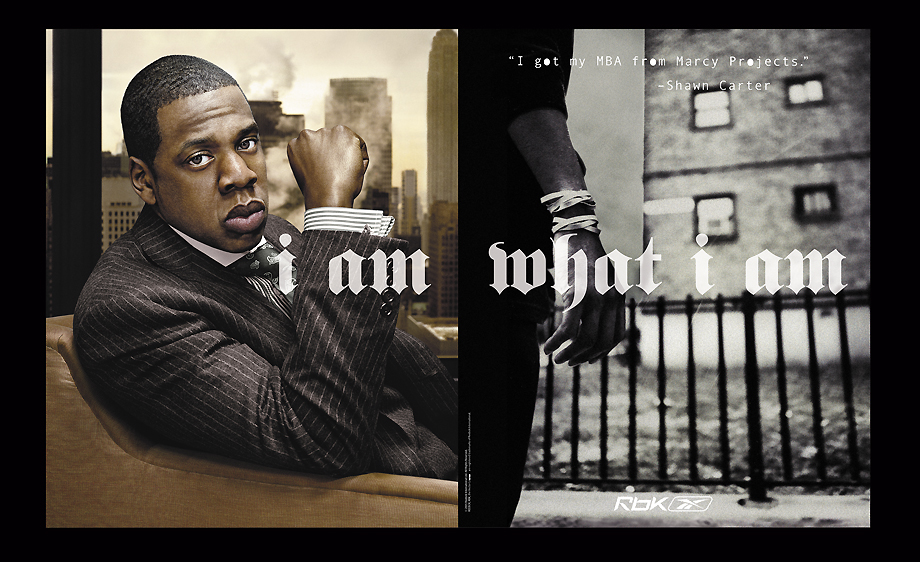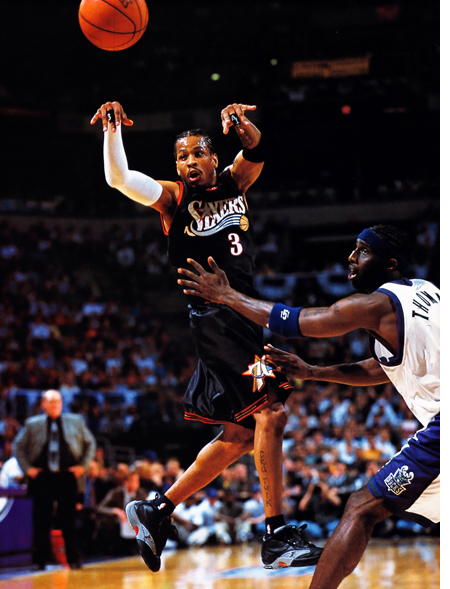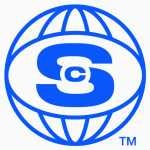words & interview // Zac Dubasik & Steve Mullholand
photography // Steve Mullholand
as published in Issue 45 of Sole Collector Magazine, the 10th Anniversary Issue
For Issue 26, we decided to take a very different look at the sneaker industry. Rather than focusing on the kicks themselves, we looked at some of the people behind them. There are so many different types of jobs that go on behind-the-scenes in order to take a sneaker from an idea and make it into a reality, and we wanted to really show people how you could work in this industry without having to be a designer.
One of the highlights of that issue was the interview with Reebok’s Todd Krinsky, whose story was especially inspiring.
Krinsky’s path was particularly long, but eventually had him working hand-in-hand with Allen Iverson and building up the RBK business from scratch through partnerships with the likes of Jay-Z, Pharrell and 50 Cent. Today, he's largely credited in bringing Reebok "back."
Interview excerpted from Issue 26 -- January 2009

Steve Mullholand: Could you talk a little about how you first came to the company?
Todd Krinsky: Yeah. I started selling shoes when I was 16. I worked at a couple different footwear chains, and I worked there for probably three to four years, even through college I was selling shoes. So I’ve been collecting shoes since I was young, and I’ve been selling shoes since I was 16. I always knew I wanted to get into the sports and entertainment field – I didn’t really know what.
When I graduated from college in New York, I came back to Boston and it was a really bad … it was 1992 … and it was a really bad time for young people to get jobs. It was really one of those periods, probably like now, where no one’s hiring. And so I had majored in film and television and I was going to move out to L.A. At the time, I wanted to write screenplays like a lot of people in the world wanted to, and something happened in Boston at home that made me stay here for a little while and I needed a gig. So I ended up coming up here and interviewing, and they had nothing open except administration jobs. So, I took a typing test and I typed like eight words a minute and …
SM: That’s not good right?
TK: That’s not good, no. [Laughs] I didn’t even know that wasn’t good until she told me. So she was like, “Look, you really can’t be in admin.” So basically, I gave like that Jerry McGuire speech, you know, because you’re in the building one time. It’s this big, beautiful corporate building. So I just gave this woman this big speech about how I was born to be in this industry. I love sports, I love music ... I’ve been selling shoes, blah, blah … and I gave her this speech and then that was it. I drove away, and I remember looking in the rear view mirror being like, “I ain’t ever going to see this place again.”
Then I got a call about this temp pool that they have where you come in on a daily basis. They would call that morning and you’d come in and work on whatever the project was that you could do. They called me like on January 20th in ’93 and they were like, “You know, you want to come in? We’ve got some odd jobs.” I was like, “Yes!” So I came into Reebok wearing a three-piece suit and they had me packing Super Bowl jerseys all day. [Laughter] I’m doing this stuff in like a three-piece suit. It was crazy. All the other warehouse guys are walking by like, “Yo, that’s the kid who’s wearing a suit.” I realized pretty soon that Reebok was a pretty chill place and you could dress casually.
So then I kind of ended up seeing that there was an opening to work in the mailroom and when you go through four years of school, your family is not really supportive of you working in the mailroom. But I was like, “Yo, this is what I want to do, this is the career I want to be in, and this is the place I want to be.” So, I took this job delivering mail and sending faxes. … I would take mail instead of putting it in their mailbox, I was bringing it right to their desks. People all thought there was this new service where you’re getting mail to your desk. And that’s how I was meeting everybody.
The other thing I used to do is run ball at lunch with the guys. I was young and was able to meet all the guys playing ball at lunch. To make a real long story short, I worked in the mailroom for a year and half, just hustling every day, meeting people, trying to figure it out. One of the guys I met was head of marketing. He said, “Look, if you want to be successful in the industry, product is king.” That’s the one thing he told me, and that’s the one thing I’ve always remembered and I tell everyone. I think you can do anything in this industry, but if you learn product, if you learn the design and the development, the manufacturing, the marketing of a product and you really respect it, I think you can do a lot of different things. I ended up getting a job as an associate product development manager when I was 25, and basically I was responsible at that point for working on various shoes and would be the liaison with the factories and work on the construction of the shoe and things like that. I really didn’t know a lot about it, but I just jumped into it, and it was a better gig than the mailroom.
Then in like ’98, they asked me if I wanted to move overseas, and I said, “Yeah, definitely.” I was young, no kids and it was a chance to go to Korea, which is where one of the first athletic shoe-making countries was. So, they offered me a chance to go over there and help hire and build a place called KDC, which is our Korean Development Center. It was the best decision I made and a tremendous experience. You had the opportunity to learn every day. That was cool, and I always had a passion for basketball and I always had a passion for the product marketing side, and so in about the year 2000, I was offered a gig to come back.

I was offered a chance to head up basketball marketing and I knew nothing about basketball marketing, but I was like, “You know what, I really want this opportunity.” I learned so much in Asia and could have stayed and learned more, but felt I needed to seize the opportunity and take what, at the time, was a dream job for me. If you know how the shoes get made, and you know how the shoes get priced, and you know how the shoes get delivered … you understand all those nuances, it’s easier to do the marketing side. So, I was like, “I’m going to do it, I’m going to try it,” and I jumped into it, and I started working again with A.I. and started working with a lot of other athletes we had and started delivering and working with designers on signature shoes and I kind of learned that side … I learned how to work with the retailers, I learned how to really get immersed in the culture of the consumer. I would be on the road all the time. I would be in Chicago, I’d be in New York in every borough, I would be in L.A., and you start to learn the fashion trends in different parts of the country. You learn the difference between sneakerheads and urban kids and suburban kids. I had a good pulse on how to make different products for different consumer bases. It was cool, it was a great experience; just building lines and product in the basketball category.
One thing that was really lucky for me was I did get to work with a lot of great designers and a lot of great developers and I think that I was always able to center myself around people that knew more than me that I could learn from. That’s one of the things I did all the time. People didn’t even know I was pulling information from them when I was, but I always try to ask designers a lot of questions. … I would just pick those guys’ brains because they just knew so much about how to make the perfect shoe, or how to attempt to make the perfect product. So, I did that for a couple years and our basketball business grew, and we delivered some new things in the marketplace like Above the Rim and the A.I. franchise and some other lifestyle stuff in basketball, and then they expanded my role to be involved in Cleated and Training, so I dealt with kind of all of the Young Men’s business. I did that for a little while and the business was good, but we were kind of in quicksand a little bit.

Other brands were just getting more traction in those areas, and that’s in 2001 when we began to have meetings and said, “We need to decide what we want to be.” We decided we wanted to be relevant with young men. If you want to be relevant with young men, you can’t just do what the other brands are doing. That’s when we created the RBK business, which basically was to fuse music and sports, and create our own space in the marketplace.
I think my greatest experience, outside of living in Korea, in 16 years here was building the RBK business. We went from nothing to signing Jay and signing 50 and signing Pharrell, creating Ice Cream, creating G Unit, S. Carter and bringing Iverson into the fold and Above the Rim. Before you knew it, we became very relevant in that space. We did something no one else did before by creating the S. Carter. That shoe right there that kicked it all off was like, if AI can sell shoes, why can’t that guy? He’s as relevant culturally and fashion-wise and so that started the RBK business, which became a huge, incredible business for us. I was involved in building all the product with those guys and delivering the product lines, margin, profit etc., and so that went on until about 2005 or 2006.
To be honest with you, man, after being in product for 14 years at different capacities, it was great. I went from U.S. development, to manufacturing in Asia, to product marketing. I did all the different disciplines outside of designing the shoes. Although some designers would tell you I tried to design the shoes, too, [laughs] but after doing all that, I got kind of burnt. For me, building product is a passion, and it’s an honor to be able to do that and it’s an honor to be able to make shoes and then see kids down in the UK, Miami, Tokyo, Houston or Brooklyn wearing shoes you helped create.
That’s a tremendous honor, and if you really, really can’t put your heart and soul into it, it gets hard. For me, I felt like I was coming in every day and looking at designs and not really adding the value I used to add. I felt like I needed a break. Like anything, it’s very intense, and so I met with some people here. Since I had worked on the RBK business, I had a lot of relationships with the artists and the athletes; moving over to this role in sports marketing wasn’t that big of a jump for me. I had to learn different aspects of the business such as contract details and the nuances of certain deals and all that, but it wasn’t a huge jump. I did that and I left product after 14 years and I definitely miss it and I’m still involved in certain things, but I made that move and came over to do sports and entertainment marketing. ...
It’s been a crazy 16-year journey, but for me it all started with the passion for wanting to be in this business and then taking any opportunity that came to me. … Just kind of letting the opportunities come and then seizing them, and that was kind of my journey I guess.
